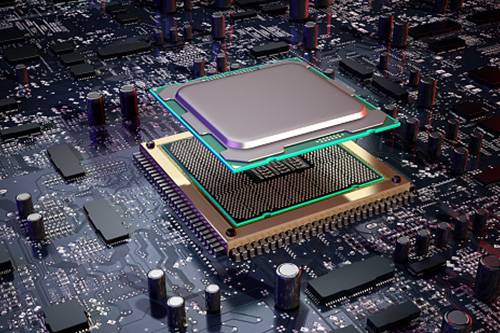AMD EPYC™ CPUs Articles
- October 20, 2022
- Author: David Strom
Weka’s file system, WekaFS, unifies your entire data lake into a shared global namespace where you can more easily access and manage trillions of files stored in multiple locations from one directory.
- October 18, 2022
- Author: David Strom
In F1, fast cars and fast computers go hand in hand. Computational performance became more important when F1 IT authorities added rules that dictate how much computing and wind tunnel time each team can use. Mercedes was the top finisher in 2021 giving it the biggest compute/wind tunnel handicap. So, when it selected a new computer system, it opted for AMD EPYC™ processors, gaining 20% performance improvement to get more modeling done in less time.
- October 13, 2022
- Author: David Strom
Eliovp, which brings together computing and storage solutions for blockchain workloads, rewrote its code to take full advantage of AMD’s Instinct™ MI100 and MI250 GPUs. As a result, Eliovp’s blockchain calculations run up to 35% faster than what it saw on previous generations of its servers.
- October 11, 2022
- Author: David Strom
Azure HBv3 series virtual machines (VMs) are optimized for HPC applications, such as fluid dynamics, explicit and implicit finite element analysis, weather modeling, seismic processing, and various simulation tasks. HBv3 VMs feature up to 120 Third-Generation AMD EPYC™ 7v73X-series CPU cores with more than 450 GB of RAM.
- October 6, 2022
- Author: David Strom
Running heavy AI/ML workloads can be a challenge for any server, but the SuperBlade has extremely fast networking options, upgradability, the ability to run two AMD EPYC™ 7000-series 64-core processors and the Horovod open-source framework for scaling deep-learning training across multiple GPUs.
- October 3, 2022
- Author: David Strom
- September 30, 2022
- Author: David Strom
The Supermicro SuperBlade's advantage for the Red Hat OCP environment is that it supports a higher-density infrastructure and lower-latency network configuration, along with benefits from reduced cabling, power and shared cooling features. SuperBlades feature multiple AMD EPYC™ processors using fast DDR4 3200MHz memory modules.
- September 28, 2022
- Author: David Strom
- September 28, 2022
- Author: David Strom
“AMD EPYC™ processors are now a part of the world’s hyperscale data centers,” said Lisa Su, AMD’s CEO. Meta/Facebook is now building its servers with powerful third-generation AMD EPYC™ CPUs.
- September 22, 2022
- Author: David Strom
The Budapest Institute for Computer Science and Control (known as SZTAKI)
- ‹ previous
- 11 of 12
- next ›











